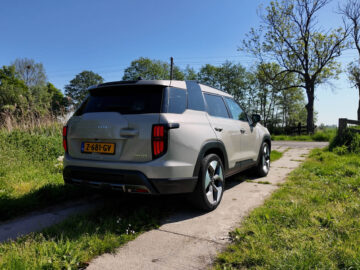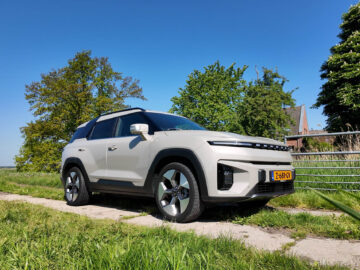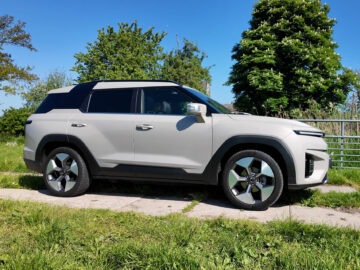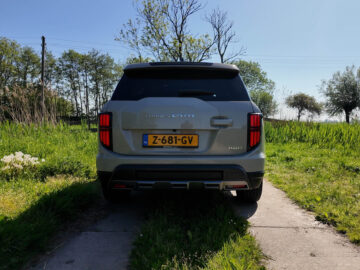You keep money by 30% off road tax – a comparison
The scheme until entering 2025
Until the end of 2024, it was clear. You didn’t have to pay road tax for all-electric cars (EVs). Not a euro, not a penny, just zero. You literally drove around tax-free. That was nice, especially for heavier electric models. But in early 2025, that changed. The complete exemption disappeared and in its place came a 75 percent discount on motor vehicle tax (MRB). So you pay 25 percent of the normal rate. This arrangement only applies for the year 2025.
How much does 30% off really save compared to 25%?
Until recently, it seemed that electric drivers would receive a 25 percent discount on road taxes from 2026 through 2028. That is considerably less than the 75 percent discount in 2025, but still a financial advantage over a fuel car. This arrangement is likely to be modified and made more attractive to electric car owners. The rebate would then be increased to 30 percent. That sounds like a small difference, but how will it work out in practice?
Let’s look at the KGM Torres EVX, with an unladen weight of 1,879 kilograms. In the province of South Holland, without a discount for this car, you would pay 1,532 euros annually in road tax. With a 25 percent discount, you still pay 1,149 euros of that per year. But with a 30 percent discount, that amount is reduced to 1,072.40 euros per year.


On an annual basis, that saves 76.60 euros. Not earth-shattering, but a nice bonus. If you calculate that difference over the three years in which this new regulation applies – so 2026, 2027 and 2028 – you save a total of 229.80 euros. For that amount, you can drive quite a few extra kilometers without emissions!
Road tax electric car vs. fuel car – same weight
To really understand how much benefit an electric car provides, it is interesting to compare it not only with itself, but also with a conventional car of the same weight. Therefore, we again take the KGM Torres EVX as an example, weighing 1,879 kilograms, driving in the province of South Holland.
For an electric version, you will pay 383 euros in road tax in 2025 thanks to the 75 percent discount. In the following years – 2026 to 2028 – we calculate with the new 30 percent discount, which brings you to 1,072.40 euros per year . Add that up, and for the entire period you end up with 3,600.20 euros in road tax.
Now suppose you were to drive the exact same car, but with a gasoline engine. In that case, you won’t receive a discount. You just owe the full amount. At this weight, that comes down to 1,532 euros per year. If you calculate that over a period of four years (2025, 2026, 2027, 2028), you arrive at 6,128 euros. The difference? 2,527.80 euros in favor of the electric car.
Road tax electric car vs. fuel car – lower weight
Now perhaps a counter-argument is beginning to occur to you: “An electric car is heavier than a fuel car.” True. Those extra pounds are largely due to the battery pack. So a fair comparison should really look at what you pay for the same car, but as a fuel variant.
Fortunately, it exists. The gasoline version of the KGM Torres has an empty weight of 1,528 kilograms. Again, we are looking at the province of South Holland. For this model, you pay 1,072 euros per year in road tax. Over a four-year period, that comes to 4,288 euros.
Compare that with the 3,600.20 euros you spend for the electric Torres EVX with heavier battery pack and the difference suddenly becomes a bit smaller. But, the difference is still 687.80 euros in favor of the electric car. Despite the higher weight, you still pay less thanks to the road tax discount.


But road tax is not the whole story
Road tax is only part of the total cost of a car. If you really want to know whether an electric car is more economical than a gasoline or diesel car, you have to look at other factors as well. Consider fuel costs and maintenance.
Take consumption, for example. Gasoline prices fluctuate constantly and are almost always pressured by geopolitical tensions and tax increases. Electricity isn’t free either, but its price is often more stable. You have more control over it, especially if you can charge at home, such as through your own charging station. Do you have solar panels? Then you can even literally run your car on its own power on sunny days. Charging smartly, at the right times and at the right rate, makes a big difference in your wallet.
Then there is maintenance. An electric car has far fewer rotating and wear parts than an internal combustion engine car. No engine oil, no spark plugs, no exhaust, no timing belt – in short, less chance of wear and tear on (moving) parts. Even brakes tend to wear less quickly thanks to regenerative braking. There is less chance of unexpectedly facing expensive repairs. That means peace of mind both in your head and in your wallet.
You have access to everything
Finally, a bit about ease of use. There are rules that govern where you are allowed to drive. In more and more cities, cars with diesel engines are banned from environmental zones. This is happening not only in the Netherlands, but throughout Europe. Access to these zones is becoming increasingly strict. An electric car, on the other hand, is welcome everywhere. You don’t have to think about local emissions rules or detour because your car doesn’t meet the requirements. For people who frequent urban areas, or want to go on vacation to cities like Paris or Berlin, this is a significant advantage.
Conclusion: electric driving remains advantageous
All in all, this shows that electric driving offers more benefits than just lower road taxes. The combination of lower running costs, less maintenance and maximum access makes driving an electric car attractive on multiple fronts. And yes, so still financially, too. Certainly until 2028 you will still benefit from tax advantages. But even after that, if used smartly, the electric car is worth considering.

